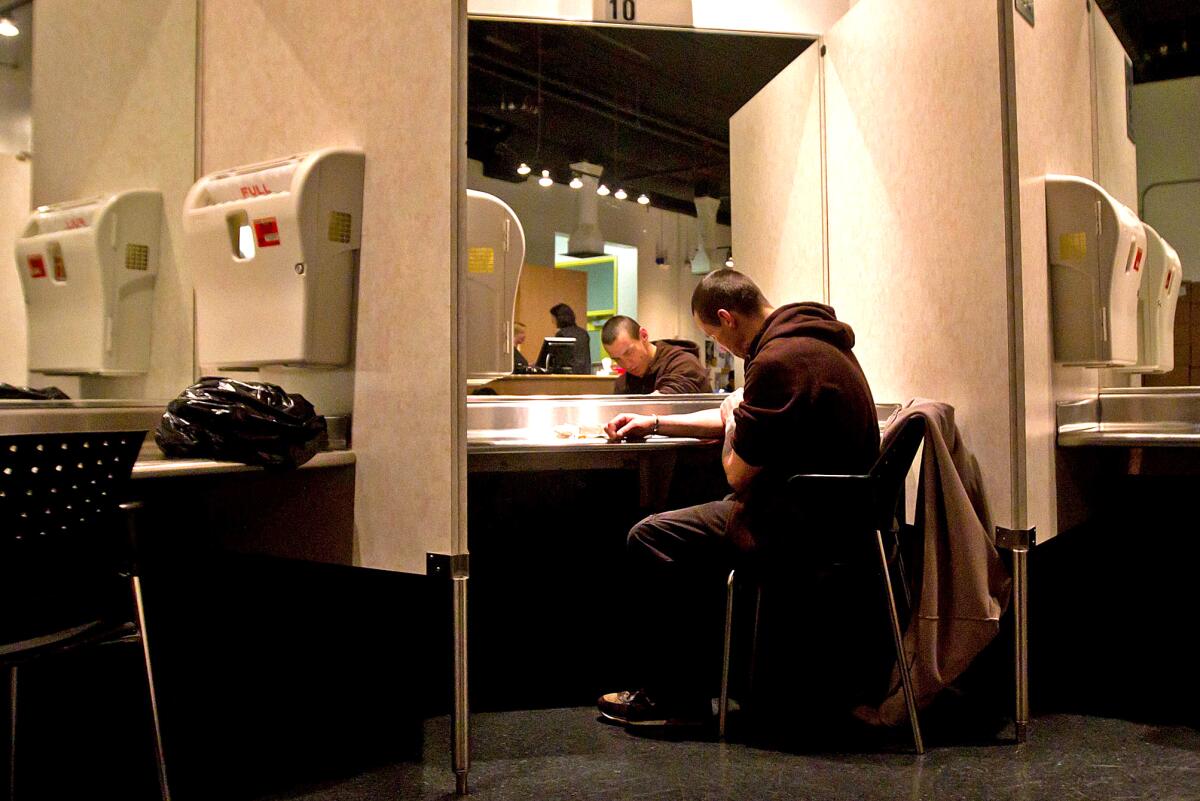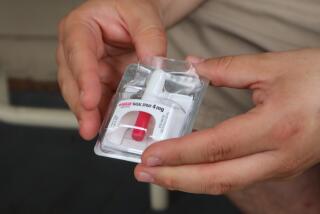Editorial: New York City is saving people from drug overdose deaths. Why can’t California?

- Share via
For years officials in U.S. cities hit hard by the opioid epidemic — San Francisco, Philadelphia and Boston, to name a few — have been trying to open facilities where addicts could safely self-administer their illicitly obtained substances without the fear of overdosing or of being arrested.
These efforts have been stymied by a combination of misplaced fear from locals about “drug dens” and the heavy hand of the federal government, which last year blocked what would have been the nation’s first such facility from opening in Philadelphia for violating the “crackhouse provision” of the Controlled Substances Act. President Biden’s support of “harm-reduction” measures to address the opioid overdose epidemic led many to believe that perhaps he would clear the way for overdose prevention sites across the nation. No such luck.
Last week, New York City officials decided that the crisis is too serious to continue waiting for permission that may never come, and opened two supervised drug consumption facilities in Manhattan — which started saving lives immediately. Good for them for having the courage to do what no other city officials have. And so far, the gamble appears to have paid off as federal authorities haven’t moved to shut down the facilities.
And it’s hard to imagine that the Biden administration would do so, given that overdose deaths have increased nearly 30% over last year. In the 12 months ending April 2021, more than 100,000 people died in the U.S. from drug overdoses, more than 10,000 of them in California alone. And that number might have been considerably higher were it not for the availability of the overdose-reversing drug naloxone, which is now sold over the counter.
Clearly, something has to be done to stop the dying. We hope that New York City’s action will embolden officials in other cities and states to open their own supervised drug consumption sites. Similar facilities have been operating successfully in Canada and several European countries for decades, and data show that they reduce drug overdoses in the vicinity, prevent the spread of disease such as HIV and hepatitis and decrease the number of syringes discarded in the street. These facilities can also refer addicts to treatment services.
Nevertheless, efforts to open facilities are often met with stiff local opposition from those who incorrectly liken these to dirty, unsafe crackhouses or opium dens of yore. Rather, these are health facilities that provide clean needles and are staffed by trained professionals who can administer life-saving care if a user overdoses. Most of overdose deaths involve the powerful synthetic opioid fentanyl added to other substances sometimes without the knowledge of the user.
Opponents of drug consumption sites — and there are plenty — appear to mainly be worried that the centers will encourage more drug use and that these facilities will impact the surrounding neighborhoods. Given the dire state of neighborhoods now plagued by rampant public drug use, such as San Francisco’s Tenderloin and Los Angeles’ skid row, it would seem likely that having clean, safe and indoor setting for addicts to consume drugs sites could improve the situation on the street.
Of course, we realize that opening centers for addicts to safely use drugs isn’t the solution to the overdose crisis. It’s a stop-gap measure to help keep people alive long enough to get the addiction treatment they need. When the California Legislature reconvenes in January, it should pass with haste Senate Bill 57 by Sen. Scott Wiener (D-San Francisco) which will clear the way for overdose prevention sites in Los Angeles, Oakland and San Francisco (though San Francisco officials are moving to open a site regardless). An earlier bill was passed by the Legislature in 2018, but vetoed by then-Gov. Jerry Brown. Gov. Gavin Newsom has said he’s open to signing it into law. We will hold him to that.
The Biden administration could also help by giving a clear statement that it supports states taking action to curb drug overdoses and that it won’t move to shut down the overdose prevention centers in New York City or anywhere else. That’s really the only rational and humane course of action in the face of a plague of preventable deaths.
More to Read
A cure for the common opinion
Get thought-provoking perspectives with our weekly newsletter.
You may occasionally receive promotional content from the Los Angeles Times.










